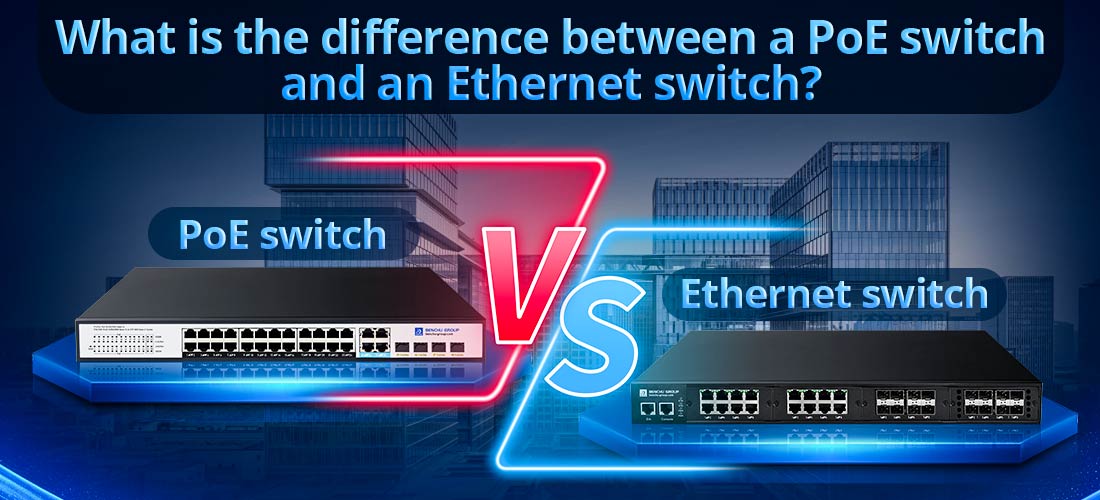In today’s increasingly connected world, understanding network equipment is crucial for both businesses and home users. Two common types of switches used in networking are Power over Ethernet (PoE) switches and standard Ethernet switches. While they may seem similar at first glance, these devices serve different purposes and offer distinct functionalities.

An Ethernet switch is a networking device that connects multiple devices on a local area network (LAN). It facilitates data transfer between these devices by forwarding data packets to the appropriate ports based on MAC addresses. Ethernet switches come in various configurations, including unmanaged, managed, and smart switches, each offering different levels of control and functionality.
On the other hand, a PoE switch combines the functionality of an Ethernet switch with the capability to deliver electrical power along with data over the same Ethernet cable. This means that devices such as IP cameras, VoIP phones, and wireless access points can receive both data connectivity and power from a single cable. This feature simplifies installations, reduces clutter, and can save costs on power outlets and cabling.
The primary difference between a PoE switch and an Ethernet switch lies in their power delivery capabilities. A standard Ethernet switch cannot provide power to connected devices; it only handles data traffic. As a result, any powered device requires a separate power source, leading to additional wiring and complexity.
In contrast, a PoE switch supplies power through its Ethernet ports, enabling devices to operate without needing a dedicated power line. This is particularly advantageous in situations where it is difficult or expensive to install additional power outlets. For instance, placing an IP camera outdoors or in a remote location becomes much easier when it can receive power directly through the network cable.
PoE switches are built according to specific standards, such as IEEE 802.3af, 802.3at (PoE+), and 802.3bt (PoE++). Each standard defines the maximum power output per port:
IEEE 802.3af: Provides up to 15.4 watts of power per port, suitable for basic devices like VoIP phones.
IEEE 802.3at (PoE+): Increases the power output to 30 watts per port, accommodating more power-hungry devices such as pan-tilt-zoom cameras.
IEEE 802.3bt (PoE++): Offers even higher power levels, reaching up to 60 watts or 100 watts per port, ideal for devices like high-performance access points and LED lighting systems.
When it comes to cost, PoE switches typically have a higher initial investment compared to standard Ethernet switches due to their additional power delivery features. However, this cost can be offset by the savings on installation and wiring, as fewer power outlets are needed.
Installation is also more straightforward with PoE switches. Since both power and data are delivered via a single cable, it reduces the overall complexity of the network setup. This is especially beneficial in large installations, such as office buildings or campuses, where multiple powered devices are spread out over a significant area.
While both PoE switches and Ethernet switches serve the essential function of connecting devices on a network, their capabilities differ significantly. A PoE switch provides the added benefit of power delivery through Ethernet cables, simplifying installations and reducing clutter. Understanding these differences can help you make informed decisions when designing and expanding your network infrastructure. Whether you choose a PoE switch or an Ethernet switch will ultimately depend on your specific networking needs and the types of devices you plan to connect.